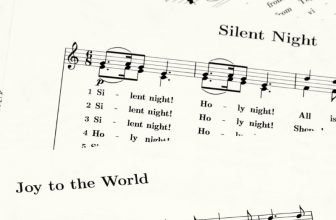What is a Breakdown in Music?

A breakdown is a section of a song in which several instruments have solo parts. In music, breakdowns are used for slowing down a theme, building tension, adding variety, and returning to the main verse or chorus in a climactic way.
All music genres can have breakdowns, but they’re mostly associated with electronic dance music and metal/punk rock.
Breakdowns are an effective way of complementing a song with something different. They can be used as a build-up and tend to lead to a drop or impactful return to the main verse/chorus. They’re often repetitive, musically simple, and very tense.
Since they shouldn’t resolve, breakdowns commonly feature a basic chord progression (or no chord progression at all), a very basic beat (or no beat at all), and a short melodic motif (or no melody at all).
Contents
Breakdowns in Dance Music
Breakdowns in dance music are sometimes referred to as build-ups. They’re either placed before or after a climactic section of a song (or both) and they help to add impact and variety to a theme.
For a dance-music breakdown to be effective, it has to slow down a song and build enough tension to satisfyingly resolve into the main verse or chorus. It’s possible to get incredibly creative with this type of arrangement, but there are a few key elements that make a breakdown sound like a breakdown.
Start with one basic loop
In a dance music arrangement, there’s always one or two very basic, repetitive loops complementing the main beat or melody. These loops may feel like they can’t stand on their own, but they’re perfect for starting a breakdown.
Breakdowns must be as basic as possible to be effective. If a breakdown is introduced to a song in a very complex, dynamic way, it will not feel like a breakdown, but rather a B section or alternative verse.
Starting a breakdown with a simple loop that’s already featured in the song also helps to create a sense of cohesion. Breakdowns shouldn’t sound like a song’s verse/chorus, but they shouldn’t be completely different as well.
Use reverb for a slow-down effect
When producing a dance music breakdown, it’s essential to make sure it slows down the song. To achieve this, spatial effects such as reverb and delay make for the perfect hack.
A reverb with a long decay is helpful for two reasons: on the one hand, it drives the listener’s attention away from a song’s groove, naturally creating a falling-down effect. On the other hand, it helps to mask the abrupt absence of sound caused by the introduction of a breakdown, compensating for the sudden lack of frequencies with its long tail.
Leave some space for the impact
When arranging a breakdown, it’s important not to forget it should have a climactic ending. Breakdowns are characterized by the introduction of new sounds, often presented one at a time. But when producers go overboard with their breakdowns, their climactic ending will probably not feel that impactful.
Limiting the frequency spectrum is a perfect way to go around this issue. After all, nothing hits harder than a bassline and kick dropping after a few bars of bass-less music. Automating a master-bus EQ is a great way of achieving this: it helps not only to limit the frequency spectrum of a breakdown but also to create the much-needed tension to satisfyingly resolve.
You can do so by using a Hi-Pass filter and slowly automating a Low-Pass filter with a high Resonance as the breakdown develops. The Resonance will help to compensate for the missing frequencies, and the final drop will sound like an explosion of new ones.
To put it simply, you should use breakdowns to take away from the song, just to give it all back in the end.
Breakdowns in Metal Music
In metal and punk rock music, breakdowns are used to add variety to a theme and work wonderfully in a live performance setup. Metalheads often associate breakdowns with “moshing,” because they tend to sound like a stripped-down version of a song with a fast pace, lots of tension, and palm-muted, rhythmic guitar and bass riffs.
Metal music breakdowns can feature vocals, but they’re most commonly instrumental. Whenever vocals are included, they tend to be either very simple (like a shout-out) or repetitive. They’re most effective when resolving back to the main chorus/verse or a powerful open-string section.
One chord should be enough
To come up with a metal breakdown, sticking to just one chord is a great idea. Tension is key for breakdowns, and playing just one chord for many consecutive bars is the easiest way to achieve this effect.
For a more powerful resolution, try to use the dominant chord of the section of the song that follows the breakdown.
Many metal breakdowns use more than one chord, but complete chord progressions that resolve are not appropriate for breakdowns due to their lack of tension.
Remove the mid-frequencies
Just like dance music breakdowns, metal breakdowns could use some frequency tweaking. In metal, removing the mid-frequencies of the guitar and bass is the easiest way of achieving an “underwater” effect that will make a breakdown resolve with power and impact.
Mid-frequency removal is a great alternative to playing palm-muted riffs since it will have a similar effect without all the hassle of coming up with a new melodic idea.
What is the difference between a breakdown and a bridge?
A breakdown is a section of a song in which instruments are removed and added one at a time, while a bridge is a section of a song meant to add contrast and serve as an additional, alternative verse.
In a breakdown, changes to the song are often created by the absence of instruments and the introduction of simpler musical themes. In a bridge, changes to the song are typically created by an entirely original musical idea, whether it’s a new chord progression, tempo, or key.
Both breakdowns and bridges have a similar function: they’re meant to add something new to a traditional verse-chorus-verse song structure. However, breakdowns are usually made by removing and simplifying elements that are already present in the song, while bridges should sound like something completely new, with added instruments, chords, and melodies that weren’t featured in the verse and chorus.
Summary
Whether you’re trying to add variety to a metal song or coming up with the perfect build-up to an electronic dance music track, breakdowns make for a very useful musical tool. They’re meant to add a new sense of impact to the main verse/chorus of a theme by stripping it down to its most basic, core elements.
Breakdowns can be easily achieved by making the most of a song’s basic motifs and adding as much tension as possible. Mastering breakdowns, however, may take a few years of practicing and lots of trial-and-error. But when a breakdown is done right, it will make any song pop and drive a crowd wild!





